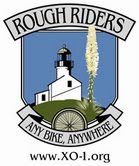What are kjs/
video here
- A unit or measure used to express the total training load.
- The average power output in watts multiplied by the time in seconds divided by 1000.
Most people use the kjs to see how much work they have done on a ride or an interval. It is also used as an energy expenditure measurement because it is closely related to calories expended. On my Ultras I average between 550-600 kjs an hour. The harder you ride the more watts you put out which then translates to more kjs. Someone that weighs more will put out more wattage consistently throughout their ride and consequently will have more kjs by the end of their ride/race.
Conversely, the shorter the distance the harder you can ride and accumulate more kjs. So while I may put out 700-750 kj in an hour during a club ride I will be in the 550-600 kj range on Ultras. After my long races my kjs are over 10,000 kjs and as much as 15,000 kjs. Refer to my website for a comparison of three Ultras I completed in 2009 question 15. Just think how much food I needed to eat to replenish all those calories ;) Ever wonder why I do Ultras -- because I love to eat!
If I average 300 watts on a climb of 30 minutes I will expend 540 kjs. Here is the math.
300 x 1800 seconds (30 mins x 60 secs) = 54000
54000 / 1000 = 540 kjs
But don't worry you don't have to do the math the power meter does all that for you .
By the way, 300 watts would be 4.42 w/kg which for me is a hard effort.
TSS- Training Stress Score
Training Stress Score takes into account both the intensity (i.e., IF) and the duration of each training session. The duration of an exercise is easy to figure out -- just look at your watch. But the IF or Intensity Factor needs a little more explaining. The IF is how hard you are working in relation to your Threshold Power. So if you are working at 75% of your threshold, Training Peaks shows it as .75. And 75% of of 275 watts would be 206 watts. The TSS calculates how long you are working and at what percentage of your threshold and gives that workout a score.
The very first thing a cyclist working with a power meter should do is perform a field test. A specific protocol can be found on the the Training Peaks website. The field test will help you discover your threshold power number as will as the rest of your power training zones.
And how do you find your Threshold Power? Let's first describe Lactate Threshold. Lactate threshold (LT) - is a predictor of an athlete's endurance performance ability. Maximal oxygen uptake (VO2 max) is an indicator of the an individual's cardiovascular fitness. VO2 max sets the upper limit to their rate of aerobic energy production but their metabolic fitness, i.e., their LT, determines the percentage or fraction of their VO2max that can they can utilize for any given period of time. In other words, we can find where an athlete's redline is with their VO2 max but their LT tells how close to that redline someone can train or race and stay in an aerobic zone.
Variability Index (VI)
1. Is a measure of steady vs erratic pacing.
2. Compares Normalized Power and Average
Power (VI=NP/AP)
3. VI = 1.0 means perfect pacing for a steadystate
session (TT, triathlon)
4. VI > 1.0 indicates a decrease in steady pacing.
So the closer to 1.0 the more steady an effort was. Road races have constant attacks and pace changes so the VI can be as much as 1.30.
Pw HR:
Is a way of illustrating how much of a change there is from the first half of the interval/workout and the second half. Steady state intervals would have very little if any separation. It can also illustrate an athletes aerobic fitness. You may see how in the first half of a Time Trial an athlete goes out too hard because his second half would have the same power output or slightly less but his heart rate would be drifting upward.
In the posting the 13% decoupling is quite high but it wasn't a steady effort. The goal would be 5%.
Videos from Joel Friel









(2).jpg)



Thanks a lot George. I appreciate you taking the time to explain the data. You’re a great representative for the “sport” and a encouragement for all us folks out there riding around.
ReplyDeleteThere is a whole host of vernacular for the field of power based training. I feel like I've only skimmed the surface. Feel free to ask more questions or drop me a line at vireo508@gmail.com and we can further our dialog.
ReplyDeleteOne of the facts I found interesting was approximately 75% of your effort becomes body heat. Now me being a Iowa winter rider, that is needed. I wait for the heat to arrive so to speak. If I start out warm I am way over dressed. I remember you mentioned awhile back you lean towards being underdressed and not pack as many clothes for certain events. Now in the summer all that heat would be counterproductive and the most efficient cooling for the body was play a big factor. Good stuff, thanks again.
ReplyDelete